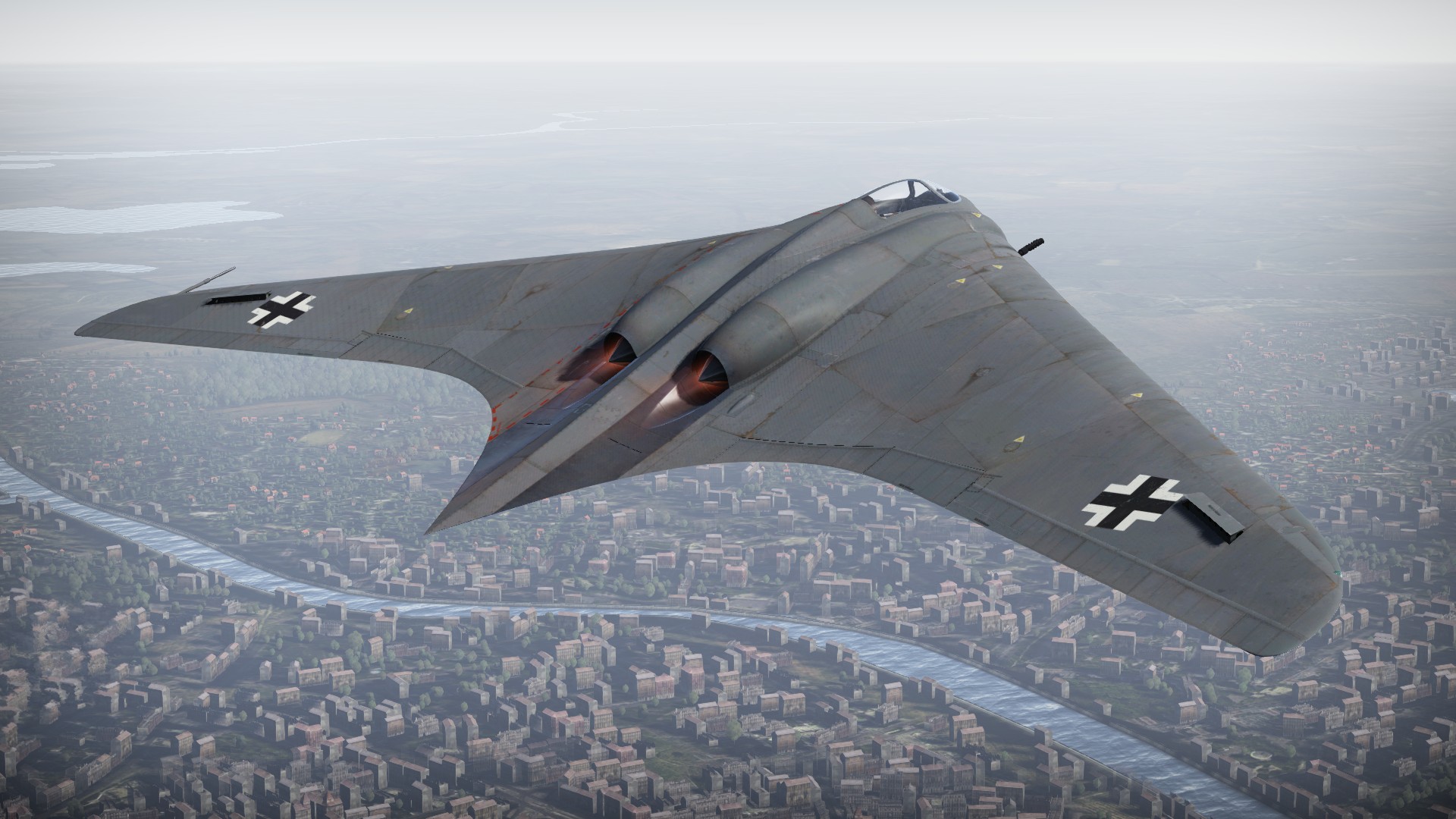In 1943, the head of the Luftwaffe Hermann Goering announced the beginning of the program “1000x1000x1000”, which aimed to develop an aircraft capable of carrying 1000 kg of bombs at a distance of up to 1000 km at a speed of 1000 km / h. These were completely unusual figures for the early 1940s, recall that the vast majority of aircraft then flew at speeds of 500-550 km / h.
However, the car that met such requests was built – Horten Ho 229. On March 1, 1944, the aircraft made its first flight. The glider of the device is made according to the “flying wing” scheme – a kind of scheme “tailless” with a shortened fuselage, the role of which is played by the wing, which carries all the equipment, crew and payload. In the Horten Ho 229, the wing was a wooden frame placed around a frame made of steel pipes. The space between the wooden beams was filled with a composite material of a mixture of sawdust and charcoal. Such utensils reduced visibility to radar, as coal is able to absorb electromagnetic waves. In fact, the Horten Ho 229 was the first “invisible aircraft”, because the radar equipment of that time was not sensitive.
In front of the wing was the cockpit, which housed only one pilot. The aircraft was equipped with 2 jet engines Junkers Jumo 004B. On March 1, 1944, the Horten Ho 229 V1 made its first flight, and about a year later a second model took to the air. By the end of the war, the company had released 18 more kits, but did not have time to make them.
It is noteworthy that the American corporation Northrop Corporation also experimented with aircraft such as “flying wing”. The result was a Northrop XP-79 jet. The first flight of this aircraft took place on September 12, 1945, but 15 minutes after takeoff lost control and crashed. It was decided to close the XP-79 project.
But another corporation project, the Northrop B-2 Spirit strategic bomber, was much more successful. A total of 21 copies were built, they are still in use today. The cost of each device was $ 2.1 billion.
Technical characteristics Horten Ho 229:
Wings area: 50.2 square meters. m
Weight of the aircraft empty: 4600 kg, takeoff: 6912 kg
Maximum weight: 8100 kg
Top speed: 977 km / h (estimated) at 12000 m
Practical ceiling: 16000 m (estimate)
Lifting speed: 1320 m / s (estimated)